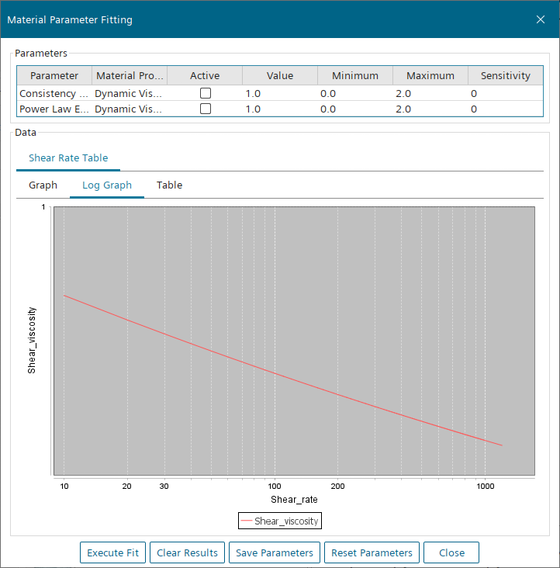Estimating Initial Values for the Power Law Parameters
Plot the imported experimental viscosity and examine the curve. This analysis allows you to provide good initial estimates for the curve-fitting algorithm, which are necessary to ensure convergence.
To estimate the initial values:
-
Right-click the
Material Calibration node and select
Fitting Tool....
The Material Parameter Fitting dialog opens.
-
Click on the
Log Graph tab to display the log-log form of the graph.

The displayed curve shows the imported shear viscosity as a function of shear-rate. It is recommended that you first deactivate all the model parameters and plot the data to see and analyze general behavior of the model. In this particular case, the experimental data shows shear thinning behavior, so the Power Law exponent should have a value between 0 and 1. Based on this observation, the initial value for the power law exponent is chosen to be 0.1 and the curve-fitting algorithm is bounded between 0 and 1. From the curve, the maximum shear viscosity is about 0.8. Therefore, an appropriate initial value for the consistency factor is 0.8. The consistency factor is bounded in a rational range between 0 and 3.
-
Enter the following settings in the parameters list.
Parameter Value Minimum Maximum Consistency Factor 0.8 0.0 3.0 Power Law Exponent 0.1 0.0 1.0 -
Click
Execute Fit.
The curve displays the power law viscosity function using the initial values as model parameters. Curve-fitting only takes place when you activate Active.
- Click Clear Results.